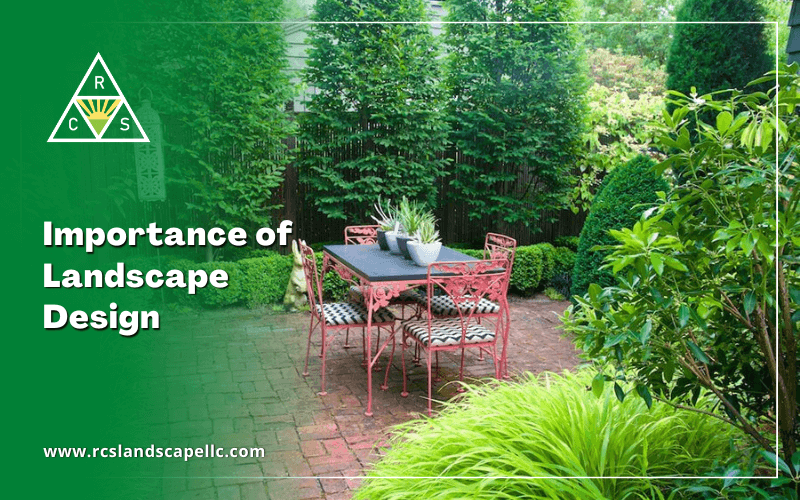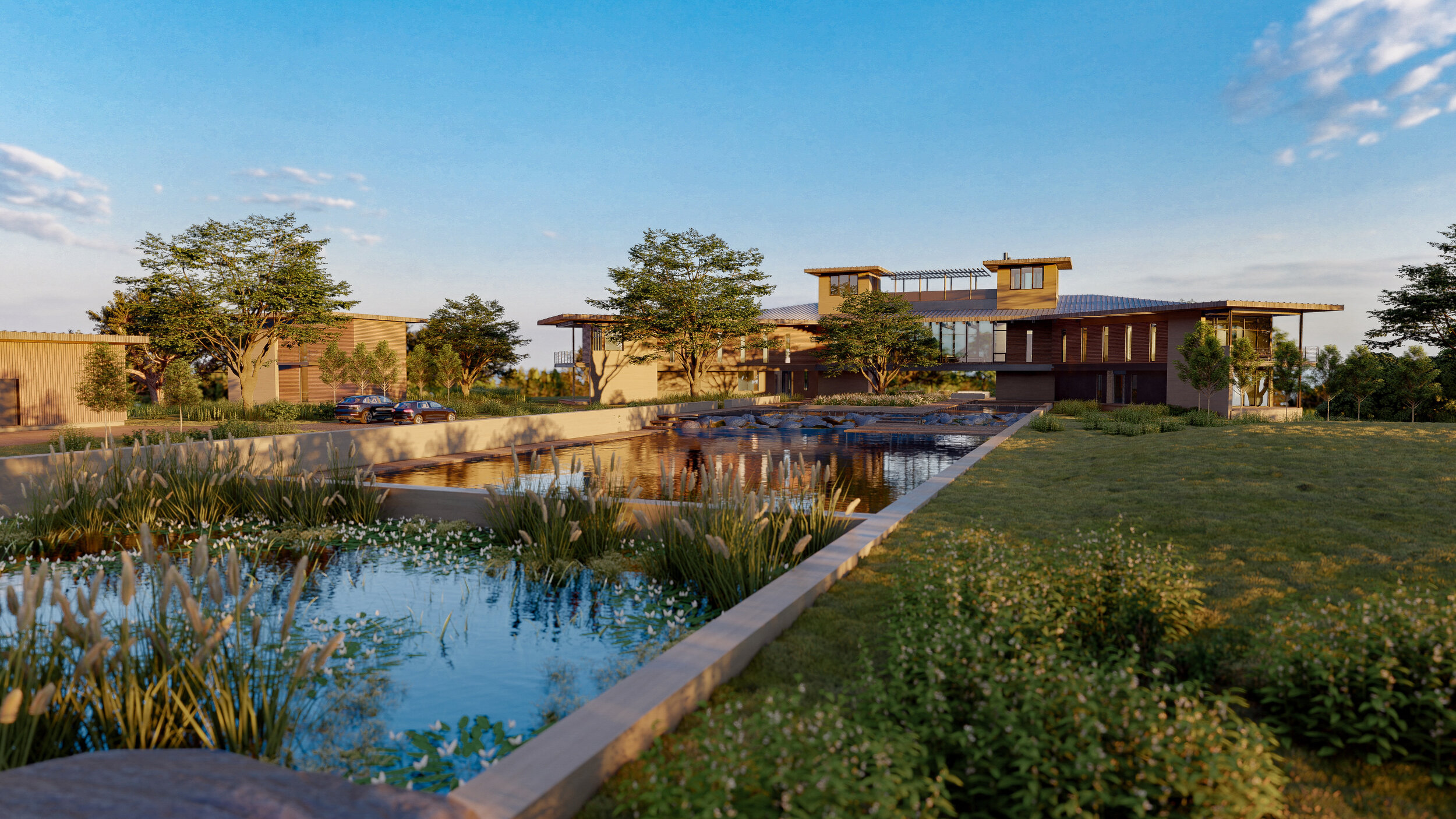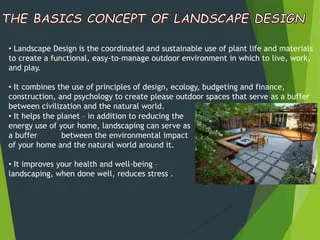Landscape Design - The Facts
Table of ContentsEverything about Landscape DesignSome Known Questions About Landscape Design.Getting My Landscape Design To WorkExcitement About Landscape Design
When creating a domestic landscape, one of the most important action is to put a plan on paper. Establishing a plan of attack will certainly save you time and cash and is a lot more likely to lead to an effective style. A plan of attack is developed with the 'style process': a detailed technique that thinks about the environmental problems, your wishes, and the aspects and concepts of style.The five steps of the layout procedure consist of: 1) conducting a website stock and analysis, 2) determining your requirements, 3) developing functional diagrams, 4) creating theoretical style plans, and 5) drawing a last design strategy. The initial three actions establish the visual, functional, and gardening needs for the style. The last two steps then apply those demands to the creation of the last landscape plan.
This is an important step for both plant option and placement and situating household activities and functions. It is essential due to the fact that the same climate conditions that influence the plantstemperature, humidity, rain, wind, and sunlightalso influence you, the individual. The following action is to make a listing of your needs and desiresthis aids you establish exactly how your backyard and landscape will certainly be used.
The functional diagram is then made use of to locate the activity spaces on the website and from this layout a conceptual plan is created. The last step is a last design that consists of all the hardscape and growing information that are required for setup. Throughout the style process there are 10 vital things to consider: for plant option and task location by considering what you want and need to aid determine forms and arrange areas by marking task areas and relating to aspects for both the atmosphere and the individual by making use of massing and layering strategies such as transition areas and centerpieces in the products, the shades, and the surface area structures for the development and upkeep of plants by utilizing lasting layout methods A thorough stock and evaluation of the website is essential to identify the ecological conditions for plant development and the most effective use of the site.
The 8-Minute Rule for Landscape Design
It is always best to use plants that will certainly thrive in the existing soil. Where plants grow well, keep in mind the dirt conditions and imp source utilize plants with comparable growing needs.

Sun/shade patterns, the amount and size of exposure to sunlight or color (Figure 1), produce microclimates (sometimes called microhabitats) - Landscape Design. Recording website problems and existing greenery on a base map will certainly disclose the place of microclimates in the yard. Plants generally fall right into a couple of of four microclimate categories-full sun, partial shade, shade, and deep shade
Get This Report on Landscape Design
Number 1. Sunlight and shade patterns. Credit Score: Gail Hansen, UF/IFAS It is necessary to note all the status quo on an exact base map when doing the website inventory (Number 2). Energies such as high-voltage line, sewage-disposal tanks, below ground energies and roofing system overhangs identify plant location. Use a land surveyor's plat of your residential or commercial property for the limits and place of your home.


Spending plan problems consist of the materials, preliminary installation prices and the on-going upkeep costs. Establish the moment and cash you agree to place into maintaining the plants and hardscape-be sensible concerning your purposes and ability. Number 3. Existing use areas. Credit History: Gail Hansen, UF/IFAS Figure 4. Proposed use areas. Credit Report: Gail Hansen, UF/IFAS There are various landscape design styles- from simple to facility, however it is useful my response to select one to lead your plant and product selection.
Several people discover it useful to look here search in horticulture publications and publications for ideas. This is an excellent beginning, however understand that the gardens in the pictures were picked because they are outstanding examples. Consider the images with a critical eye to collect concepts that you can adjust to your passion level, your budget plan and your website.
Decide if you intend to open your lawn, shut your lawn, or a little of both, to these sights (Landscape Design). In other words, do you want the yard to confine the area around you and connect primarily to the residence, or do you want the yard to open sights and look exterior, connecting to the surroundings? This will certainly provide you a starting indicate think about a theme
Fascination About Landscape Design
Every yard ought to have a kind style, but not all yards have a design motif. Many residential yards have no certain style other than to mix with the house by repeating information from the architecture such as materials, shade, and kind.
In a kind style the company and shape of the spaces in the yard is based either on the shape of your house, the shape of the areas between your house and the residential or commercial property borders, or a favorite form of the property owner. The kind style figures out the shape and company (the design) of the spaces and the web links between them.
